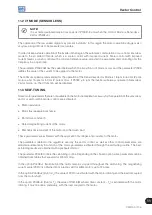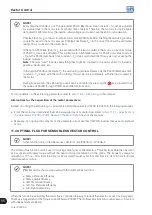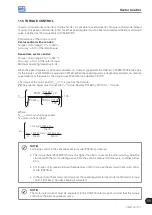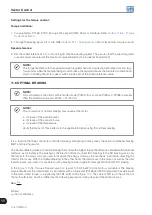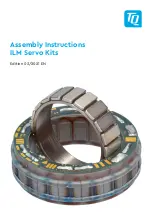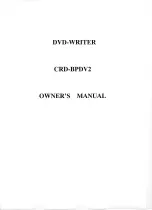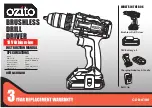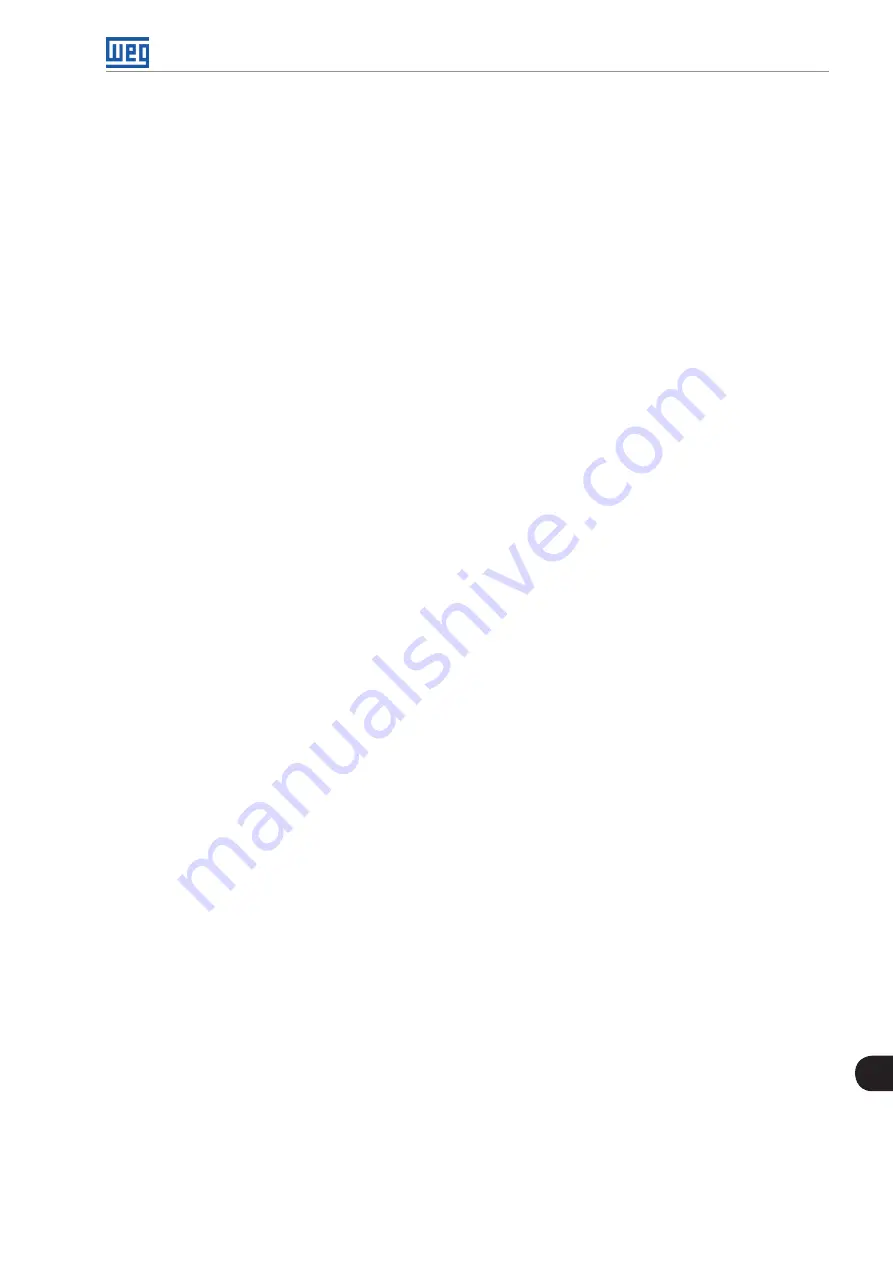
10
VVW Control
CFW700 | 10-1
10 VVW CONTROL
The VVW (Voltage Vector WEG) control mode uses a control method with intermediate performance between V/f
and Sensorless Vector. Refer to the
block diagram.
The main advantage compared to the V/f control is the better speed regulation with higher torque capability at
low speeds (frequencies below 5 Hz), allowing a sensible improvement of the inverter performance in permanent
regimen. Comparing to the Sensorless Vector, the settings are simpler and easier.
The VVW control uses the stator current measurement, the stator resistance value (that can be obtained with the
self-tuning routine) and the induction motor nameplate data to perform automatically the torque estimation, the
output voltage compensation and consequently the slip compensation, replacing the function of the parameters
P0137 and P0138.
In order to obtain a good speed regulation in permanent regimen, the slip frequency is calculated based on the
load estimated torque, which considers the existent motor data.
Summary of Contents for CFW700
Page 2: ......
Page 4: ......
Page 8: ...Summary...
Page 34: ...2 General Information 2 4 CFW700...
Page 38: ...3 About the CFW700 3 4 CFW700...
Page 56: ...7 Starting up and Settings 7 4 CFW700...
Page 58: ...8 Available Control Types 8 2 CFW700...
Page 78: ...10 VVW Control 10 8 CFW700...
Page 158: ...13 Digital and Analog Inputs and Outputs 13 28 CFW700...



























